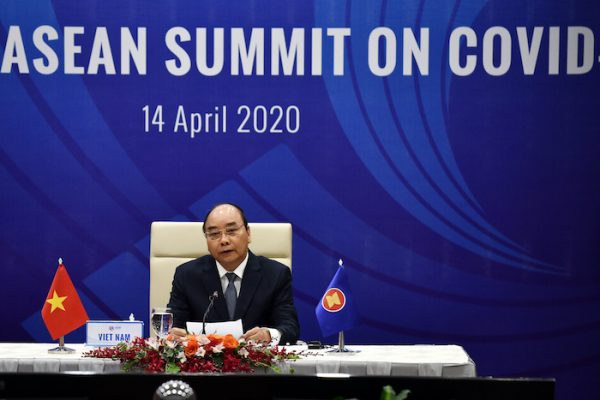Just how badly is the COVID-19 typhoon thrashing the region? And what might the post-crisis recovery and reconstruction look like? To answer these questions, it is necessary to investigate the strengths and vulnerabilities of Southeast Asia’s pre-COVID-19 economic infrastructure.
Understanding the structure of the region’s economic house requires going back to 1967, when Southeast Asian countries decided to pledge friendship to one another under the ASEAN framework. While other integrated regions such as NAFTA and the European Union have aggressively broken down trade barriers and significantly boosted intra-regional trade, ASEAN regional economic integration has chugged along slower.
Southeast Asian countries have not viewed trade between each other as a top priority. The trade agreements in the region have been forged around suggestions for ASEAN countries to lower tariffs on intra-regional trade to within a certain range and across limited industries. This has lowered but not eliminated barriers to intra-regional trade. Consequently, a relatively significant share of Southeast Asian trade is with countries outside the region. This active extra-regional engagement has resulted in ASEAN countries’ successful integration into global value chain networks.
A historically outward-facing region, in 2010 around 75 per cent of Southeast Asian commodity imports and exports came from countries outside of ASEAN. This share of extra-regional trade nudged closer to 80 per cent in 2018. This indicates that ASEAN’s global value chain network embeddedness has deepened over time.
Around 40 per cent of ASEAN’s extra-regional trade is with the rest of Asia. From 2010 to 2018 Southeast Asian countries forged major trade relationships with four Asian countries: China, Japan, South Korea and India. Outside Asia, the United States is the region’s major trading partner. ASEAN’s trade focus on Asia’s largest markets is not surprising. Countries tend to establish trade relationships with large, geographically close, and culturally similar markets.
Fostering deep relationships with a few large markets, however, is a double-edged sword. While it has allowed ASEAN to benefit from integration in global value chains, it has also resulted in increased vulnerability to the shocks affecting its network connections.
ASEAN’s participation in global value chains has allowed it to transition from a net regional importer in 1990 to a net regional exporter in 2018. But the region’s deep embeddedness in a small and tightly-coupled network cluster of extra-regional global value chain partners has exposed it to disruption to any and all of its external partners. By contrast, ASEAN’s intra-regional trade network structure is much more loosely-coupled: a consequence of persistent intra-regional trade barriers and thus lower intra-regional trade intensity.
In the pre-COVID-19 period, ASEAN built for itself an economic house held up by just five extra-regional markets, while doing less to expand and diversify its intra-regional trade network. The data shows that ASEAN trade became increasingly concentrated in these few external markets between 2010 and 2018.
This dependence on a handful of markets does not bode well for risk and crisis management. All of the region’s major trading partners have been significantly affected by COVID-19 and this in turn is blowing the ASEAN economic house down.
What are the ways forward? The immediate task at hand is to get a better picture of the region’s position in global value chain networks and to get on top of managing its network risk exposure. Already there are red flags around the region’s food security arising from its position in food value chains. It is critical to look for ways to introduce flexibility into existing supply chains for greater agility in responding to crises.
It is also an opportune time for ASEAN to harness the technology transfer gains of global value chain participation and invest in innovation-driven diversification of products and markets. The region’s embeddedness in global value chain networks certainly places it in a strong position to readily access large export markets not just in Asia but also Europe and the Americas.
Over the longer term, ASEAN is faced with the question of whether it should seriously look inwards and deepen friendships within the region or make a new and diverse set of friends outside the region. The latter option would preference those economies that have proven to be relatively more resilient to COVID-19 than ASEAN’s current four major trade partners. Needless to say, deepening existing friendships is easier than making friends with strangers.
For now, it remains to be seen whether the COVID-19 crisis can be the trigger for ASEAN to finally forge closer friendships within its own neighbourhood and to speed up the journey towards true regional integration.
Sandra Seno-Alday is a lecturer in International Business at the University of Sydney Business School.
This article is part of an EAF special feature series on the novel coronavirus crisis and its impact.

